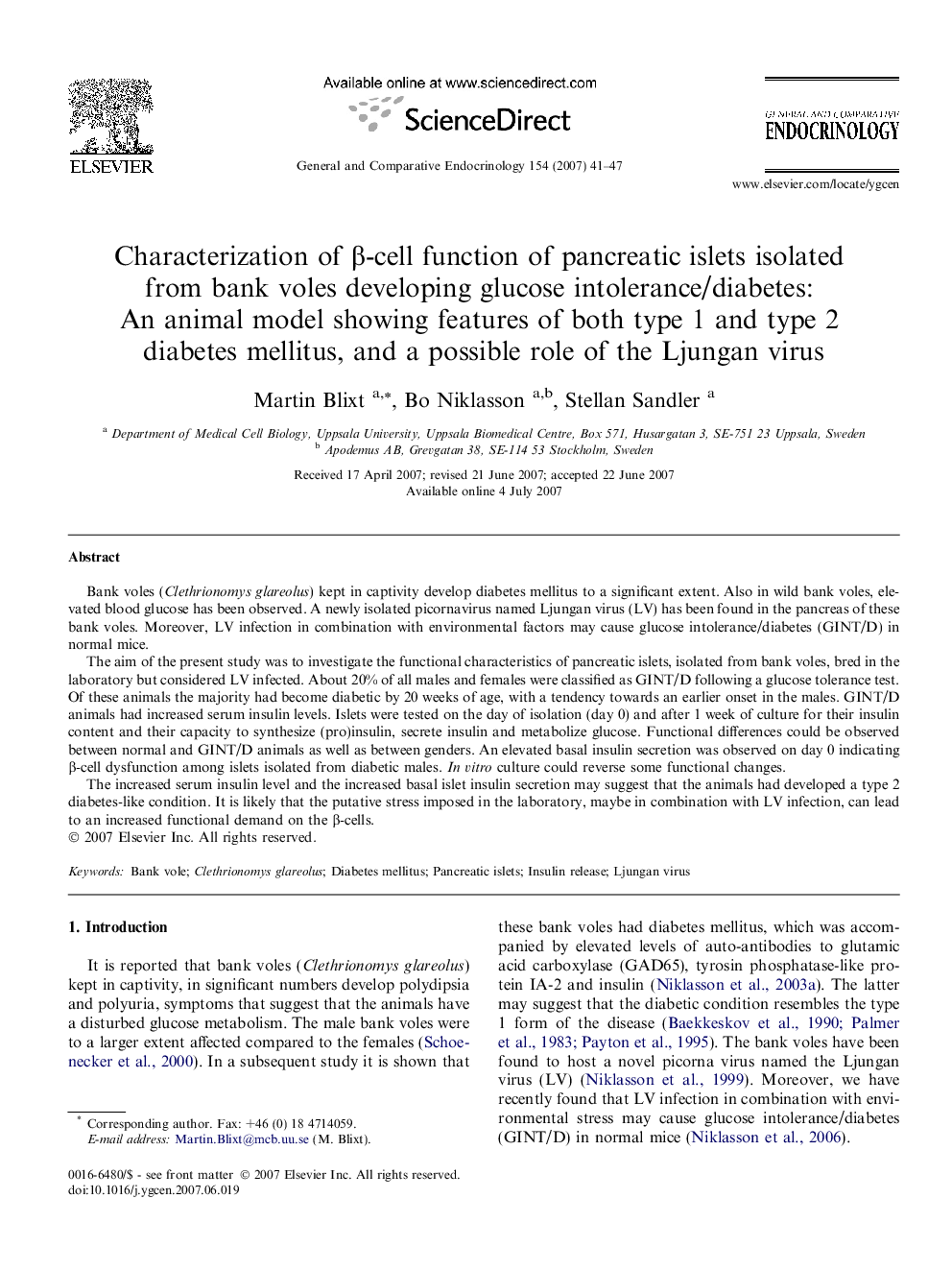| Article ID | Journal | Published Year | Pages | File Type |
|---|---|---|---|---|
| 2801669 | General and Comparative Endocrinology | 2007 | 7 Pages |
Bank voles (Clethrionomys glareolus) kept in captivity develop diabetes mellitus to a significant extent. Also in wild bank voles, elevated blood glucose has been observed. A newly isolated picornavirus named Ljungan virus (LV) has been found in the pancreas of these bank voles. Moreover, LV infection in combination with environmental factors may cause glucose intolerance/diabetes (GINT/D) in normal mice.The aim of the present study was to investigate the functional characteristics of pancreatic islets, isolated from bank voles, bred in the laboratory but considered LV infected. About 20% of all males and females were classified as GINT/D following a glucose tolerance test. Of these animals the majority had become diabetic by 20 weeks of age, with a tendency towards an earlier onset in the males. GINT/D animals had increased serum insulin levels. Islets were tested on the day of isolation (day 0) and after 1 week of culture for their insulin content and their capacity to synthesize (pro)insulin, secrete insulin and metabolize glucose. Functional differences could be observed between normal and GINT/D animals as well as between genders. An elevated basal insulin secretion was observed on day 0 indicating β-cell dysfunction among islets isolated from diabetic males. In vitro culture could reverse some functional changes.The increased serum insulin level and the increased basal islet insulin secretion may suggest that the animals had developed a type 2 diabetes-like condition. It is likely that the putative stress imposed in the laboratory, maybe in combination with LV infection, can lead to an increased functional demand on the β-cells.
